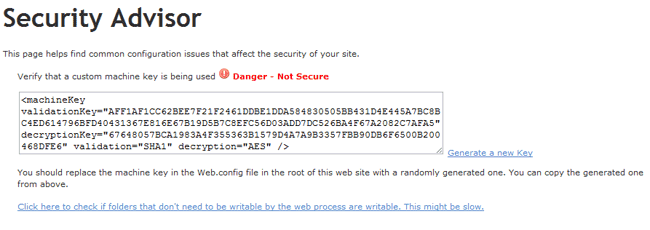I'm happy to announce the release of mojoPortal 2.3.5.5, available now on our download page.
A few weeks ago I was on the verge of releasing my new add on product In Site Analytics Pro, but when I tested the package I discovered that the graphs did not work in Medium Trust hosting. It turned out to be a problem with ZedGraph that was easily fixed by re-compiling it with the AllowPartialyTrustedCallers attribute set to true. However, since both mojoPortal and In Site Analytics use ZedGraph, they really need to both be compile against the same version of ZedGraph. There are ways around such issues with configuration to map assembly versions, but to keep things simple I decided to wait and release a new version of mojoPortal with the new version of ZedGraph before releasing In Site Analytics Pro. So I went through our list of to do items and things that have been requested by the community to find a few low hanging fruit items that could be finished quickly to make the mojoPortal upgrade more appealing. I will follow up in the next few days and make the first release In Site Analytics Pro, but it will require mojoPortal 2.3.5.5 or newer.
What's New?
In recent versions, we added a Facebook like button and a Tweet This button in the blog, in this release we made it also possible to have the Facebook like button and/or the Tweet This button in the RSS feed so that users who subscribe to the feed using Google Reader or other Feed Readers can also Like or Tweet your posts. We also added logic so that if a blog post is saved with a blank url, the url is generated by server side code.
Thanks to a good suggestion from Tim Cadenbach, we added some nice ajaxy transitions for the jQuery UI tabs and Accordion used in administrative features and elsewhere.
Added a setting in Site Settings to require a Captcha on the Registration page.
Added a setting in Site Settings to require users to type their email address twice on the registration page (to avoid typos during registration).
Added a setting in Site Settings to show a Password Strength Meter on the registration page to encourage strong passwords.
Added a setting in Site Settings to require a Captcha on the login page, not something I generally recommend doing but if your security requirements call for this it is now possible.
Added support for a new token in newsletters for #viewaswebpage# which is replaced with a link to the web page version of the newsletter.
There was a usability issue previously with the forum notification emails where an opt out link was shown for both the forum as a whole and for just the thread regardless of whether the user was really subscribed to both the forum and the thread. Now we have different notification templates for each scenario so that only opt out links are shown for notifications the user is actually subscribed to.
Added an automatic machine key generator to the Security Advisor page to make it easier to create a custom machine key.

Bug Fixes
-
Fixed issue where ZedGraph was not working in Medium Trust
-
Fixed issue where multi file selection for bulk upload did not work in IE after a recent Flash update
-
Fixed Member list paging bug in pgsql data layer
Don't forget that we are moving this site to a new server this evening so there may be some down time during the move.
If you haven't already, please vote for mojoPortal in the 2010 Open Source CMS Awards

Follow us on twitter or become a fan on Facebook

